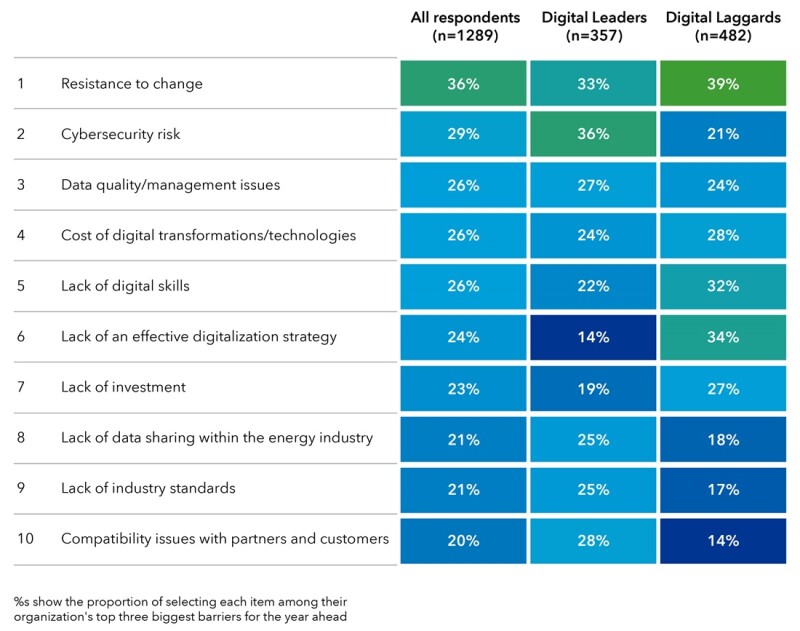Nearly half of senior energy professionals plan to integrate artificial intelligence (AI)-powered applications into their operations in the coming year, according to a new report from DNV. DNV’s latest Energy Industry Insights special report, Leading a Data-Driven Transition, draws on the 14th annual survey of nearly 1,300 senior professionals, as well as in-depth interviews with industry leaders and experts.
The survey highlights in particular the crucial role of digitalization in transforming the energy sector, affecting production, transmission, distribution and consumption. AI-based technologies, such as smart grids, predictive maintenance and real-time data analytics, are already taking hold in the energy sector and promise to further revolutionize it in the years to come. However, successful digitalization requires innovation, strategic vision and leadership, making it as urgent as decarbonization, especially since a rapid and efficient energy transition will be impossible without it.
Digital leaders versus digital laggards
The survey reveals a stark contrast between what it calls “digital leaders” and “digital laggards.” While 28% of respondents said their organizations were excelling at digitalization and were more optimistic about achieving revenue, profit and decarbonization goals, 37% said the opposite.
Leaders are significantly ahead in using digital technologies for decarbonization and energy transition, with 68% having quality data and 80% already benefiting from digital technologies, compared to 21% and 33% of laggards respectively.
When it comes to emerging technologies in general, such as AI (27%) and digital twins (34%), about a third of leaders say they are operational or advanced, compared to only a single-digit percentage for laggards. In fact, most laggards say they are in the early stages of development (planning or piloting) for all the key technologies DNV asked about. (Fig. 1).

Source: DNV
AI and data: the drivers of the future
Nearly 50% of the 1,300 senior professionals who responded to DNV’s survey said they plan to integrate AI-powered applications into their operations in the coming year, with digital leaders leading the way.
The three most effective data-driven applications for digital leaders are process optimization, systems and database integration, and operations automation. (Fig. 2). However, 50 to 60 percent of executives also report major or massive impacts from a wide range of other data-driven innovations, from predictive maintenance to supply chain management. Laggards lag across the board, with the biggest gaps in key areas such as systems and database integration, operations automation, and consumer or customer empowerment.

Source: DNV
The value of applications is often diluted by system and database integration issues. Paula Doyle, chief digital officer at Aker BP, said: “Typically, companies have a lot of legacy systems where data is locked into the application.” She went on to explain that there is a need to “liberate and contextualise data from industrial systems to make it accessible to humans and machines (for) better and faster decisions.”
AI and advanced data analytics are playing a critical role in this transformation. The report estimates that by 2050, AI will reduce clean energy production costs by $1.3 trillion and grid equipment costs by $188 billion. Overall, power system costs will be reduced by 6 to 13 percent. AI is now an indispensable part of energy systems, with 47 percent of respondents saying their organization will use AI-driven applications in its operations in the coming year – a figure that rises to 69 percent for digital leaders. (Fig. 3).

Source: DNV
Doyle highlighted the challenge of adopting a more data-driven approach, emphasizing the need for a specialized workforce to effectively track and manage data. “Effective automation of data delivery becomes extremely important,” she said, “and that’s where AI can play a key role.”
Challenges and opportunities
Despite the progress made, significant challenges remain. Resistance to change is a major obstacle for leaders and laggards alike, compounded by the need to balance security and agility in an industry where failure is not an option. (Fig. 4).

Source: DNV
Digital leaders differentiate themselves by putting digitalization at the heart of their organization’s strategy and using it to improve business performance. Nearly all (90%) said digitalization was at the heart of their organization’s strategy, compared to just 39% of laggards.
The way forward
“As the energy sector faces the twin challenges of digitalisation and decarbonisation, the ability to adapt and innovate will define success,” said Lucy Craig, Director of Energy Systems Growth, Innovation and Digitalisation at DNV. “DNV’s survey identifies the key challenges organisations face in harnessing the power of digital technologies and also highlights the opportunities that come with change. Digital leaders stand out by embedding digitalisation at the heart of their strategy, fostering a culture of innovation and investing in the right technologies. In the year ahead, these organisations are poised to continue their progress and maintain their advantage by focusing on further digitalisation and cyber resilience.”


